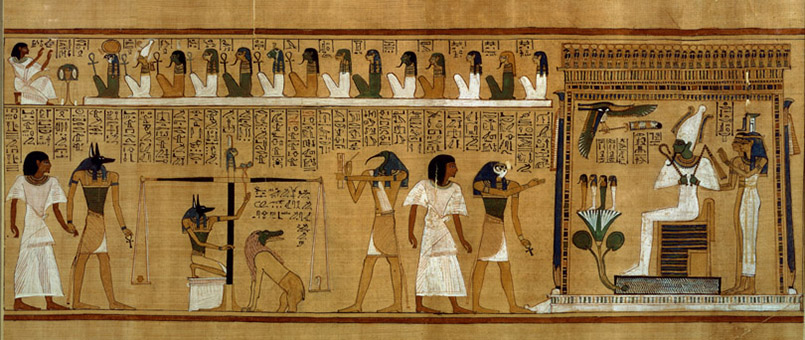
Ancient Egypt: A journey through the afterlife
Explore ancient Egyptian beliefs about life after death, as illustrated in the Book of the Dead, developed from a tradition of funerary manuscripts.
The Book of the Dead
For the Ancient Egyptians death was not the end but merely an interruption. Appeasing the gods, preserving the body and providing funerary equipment ensured admission into the afterlife. The journey to the afterlife is described in the Book of the Dead, a funerary text used for over 1500 years between c.1600 BC and 100 AD, known to the Ancient Egyptians as the ‘Spells of Coming Forth by Day’.
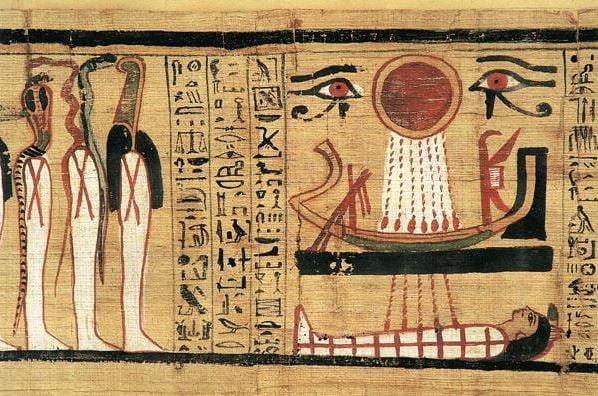
The journey of the deceased to the afterlife, from the Book of the Dead of Heruben, Third Intermediate Period (papyrus), Egyptian 21st Dynasty (c.1069-945 BC) / Egyptian National Museum, Cairo, Egypt / Photo © AISA
The compilation of spells was thought to equip the dead with knowledge and power to reach the next world in safety, avoiding the obstacles which barred the way and ultimately ensure eternal life. The inscriptions and vignettes were usually painted on papyrus or linen but were sometimes featured in the tomb wall paintings or the coffin.
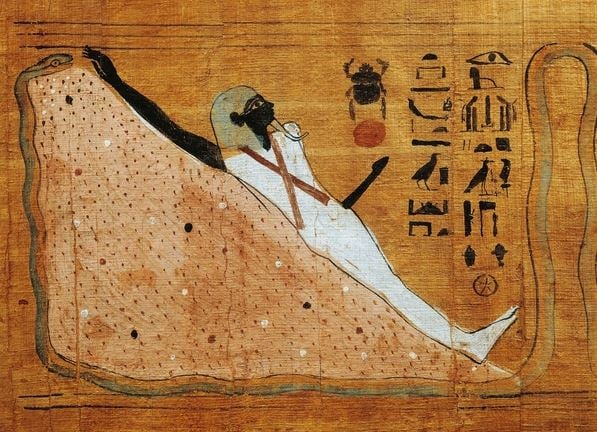
Scene from Book of Dead, Heruben Papyrus, Egyptian Civilization, Third Intermediate Period, Dynasty XXI / Egyptian National Museum, Cairo, Egypt / De Agostini Picture Library / A. Dagli Orti
Judgement of the Deceased
One of the most well-known illustrations of the Book of the Dead is from Chapter 125 which depicts the judgement of the deceased ritual. The heart is weighed by Anubis against the Feather of Truth, the symbol of the Goddess Maat. The heart was seen to represent the good and bad characteristics of the deceased and so, if it outbalanced the feather, it was believed that the deceased had led a bad life and would be fed to the monstrous Ammit, the Devourer.
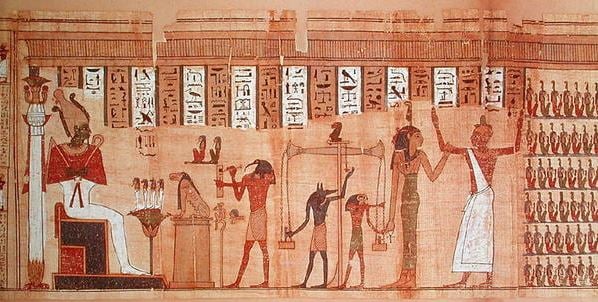
The Judgement of Osiris, detail from a Book of the Dead, Late Period (papyrus), Egyptian 30th Dynasty (380-343 BC) / Louvre, Paris, France
Preparing for the Afterlife
Tombs were often decorated with scenes of the deceased giving offerings to various gods and/or scenes depicting funeral rituals, daily life scenes and scenes of the deceased in the afterlife. Wall paintings and stelae often contained a standard offering formula, as an invocation to the gods to provide all that the deceased may need in the afterlife.
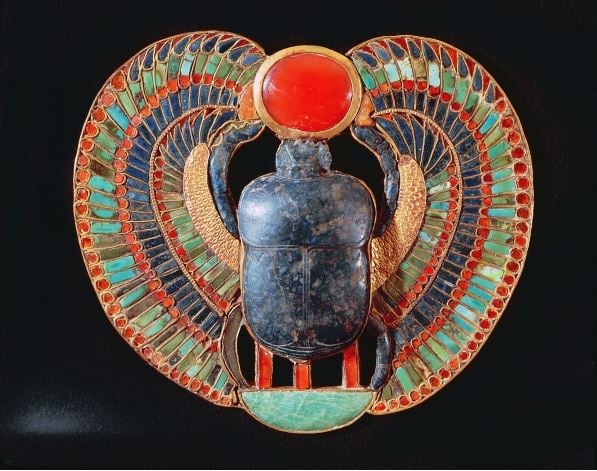
Scarab pectoral, from the tomb of Tutankhamun, in the Valley of the Kings at Thebes, c.1361-52 BC, New Kingdom (gold, lapis lazuli, amber et al), Egyptian 18th Dynasty (c.1567-1320 BC) / Egyptian National Museum, Cairo, Egypt
Each time the words were read, a fresh supply of goods would be provided. Models and shabtis were placed in the tomb and inscribed with spells to provide food for the deceased in the afterlife and to perform various agricultural tasks in the Field of Reeds, where the deceased would remain for eternity.
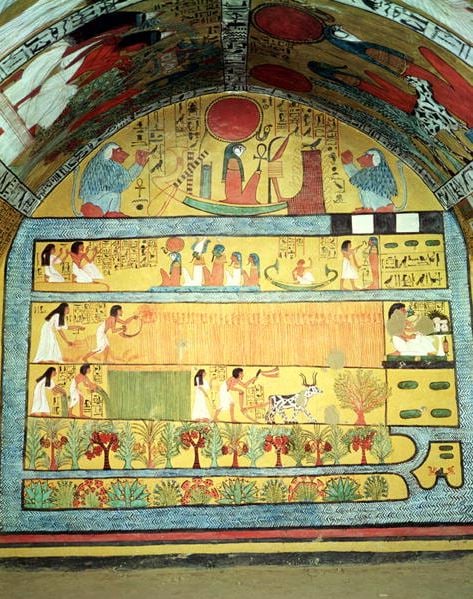
Harvest Scene on the East Wall, from the Tomb of Sennedjem, The Workers’ Village, New Kingdom (wall painting) (see also 19830), Egyptian 19th Dynasty (c.1292-1187 BC) / Deir el-Medina, Thebes, Egypt
Find Out More:
See more images from Ancient Egypt
Discover our exclusive Egypt footage collection
Get in touch with the Bridgeman team on uksales@bridgemanimages.com with enquiries about licensing images and clearing copyright.
